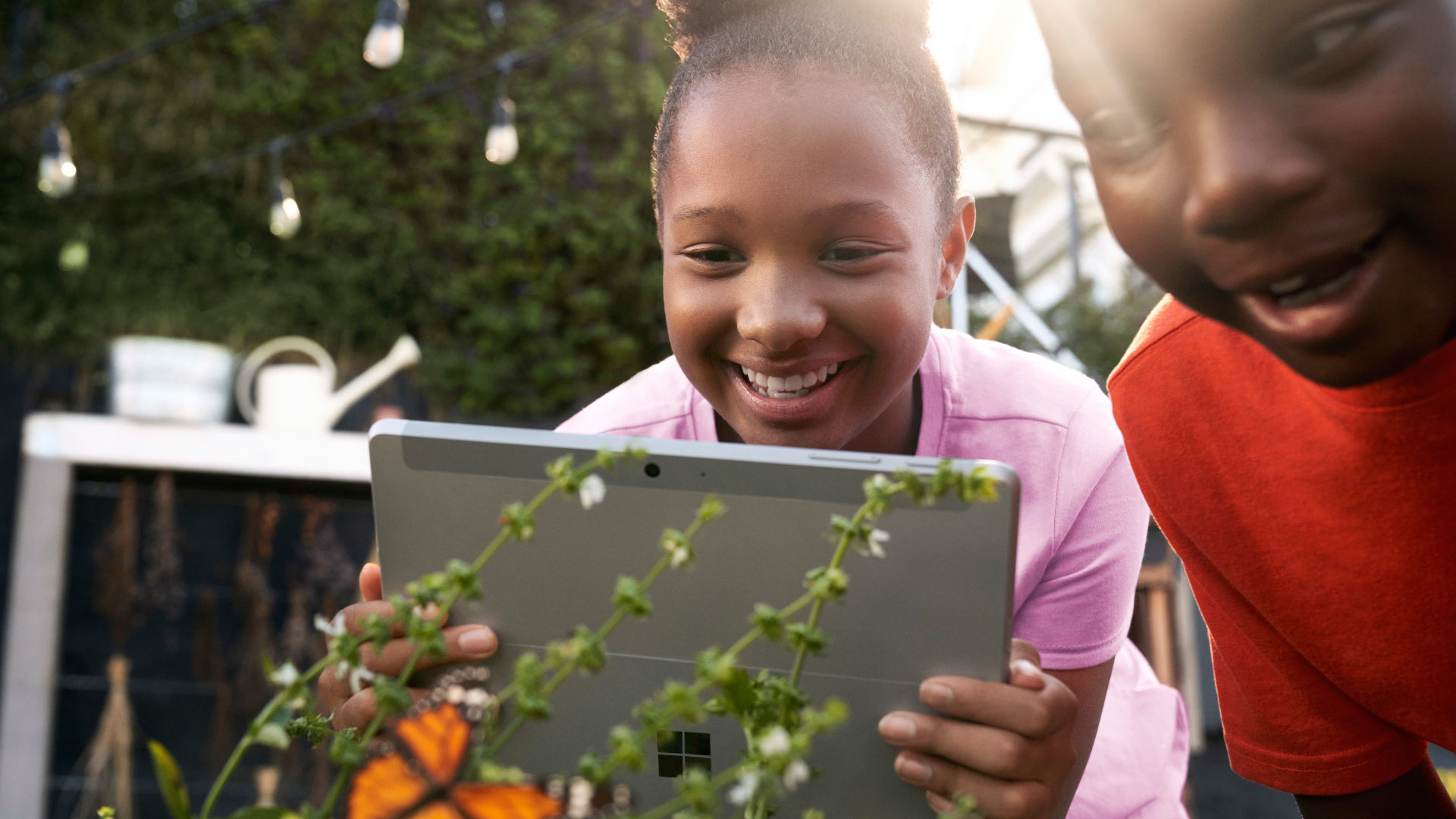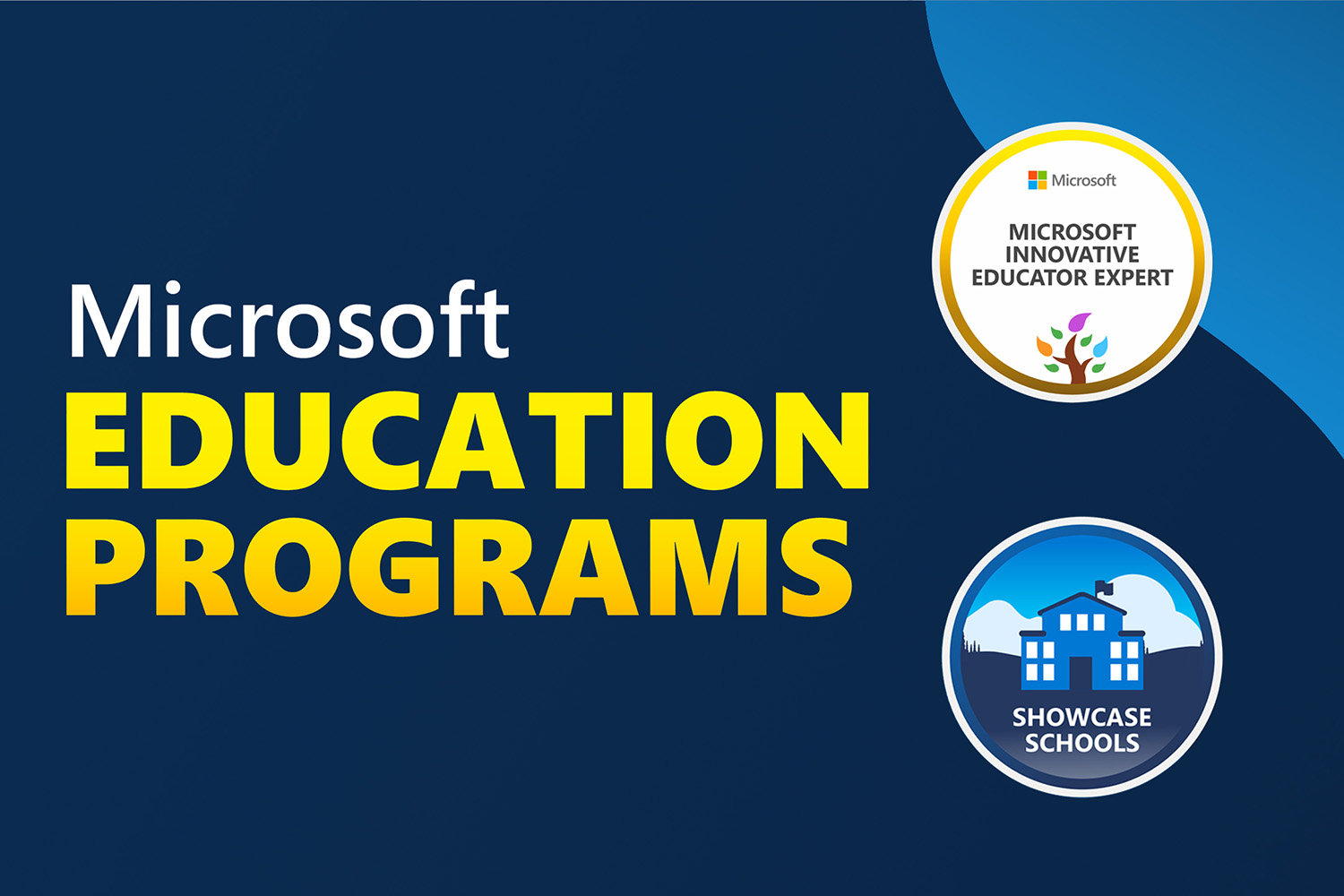When faced with the challenges of the worldwide pandemic, educators everywhere have been forced to develop creative solutions for teaching in remote and hybrid learning environments. For teachers in Victoria, Australia, Minecraft: Education Edition represented a powerful vehicle for collaboration and community in the midst of a global health crisis. Read this guest post by education specialist Dr. Bron Stuckey and Lauren Arkley of Victoria’s Department of Education and Training to hear their story.
This is the story of the 2020 Minecraft Innovation Project developed by the Department of Education and Training in Victoria, Australia, in partnership with Microsoft. The heroes of this story are the classroom teachers who took on the challenge of innovating amidst the constraints of prolonged lockdown and isolation in the COVID-19 pandemic through remote and hybrid learning with Minecraft: Education Edition. The extended version of this story—with detailed information and teaching examples—can be found in the Department of Education Sway created to celebrate teacher excellence.
The background of the project
The goals for this project were to create a community of practice that built teacher capacity in using Minecraft: Education Edition by supplying an online collaboration space in Microsoft Teams, a space where teachers would share ideas, lesson plans and resources, and seed increased Minecraft usage across the state. Schools were invited to join the project, to nominate at least two teachers to engage in the work of the community, and to create lesson plan exemplars as part of project deliverables. The project kicked off with a full-day face-to-face gathering in which we acquainted ourselves with each other, Minecraft: Education Edition, and the clusters we chose to gather around.
Moving to remote and hybrid learning
In April, shortly after the Minecraft Innovation Clusters were established, Victorian schools moved to a state of remote and flexible learning in response to the COVID-19 world pandemic. As the state moved into lockdown, teachers began to envision what this new “school” day might look like. They quickly realized that rigidly mapping the in-school day onto remote learning was problematic. For many educators in Victoria, the newness that came with teaching online seemed overwhelming. For teachers in the community, the place Minecraft held in their teaching was under review. This is a community of people eager to innovate and improve teaching and learning, but they soon discovered that while their original curriculum goals for Minecraft might be tempered during remote learning, there was a valuable place for new social experiences and ways of engaging. The community focus became about supporting, sharing, and celebrating rich and diverse social and pedagogical practices.
What follows are some snapshots of teacher and student creativity, problem-solving, and quality learning that took place over remote and hybrid learning.
 A student-created roller-coaster tour of the Botanic Gardens in Melbourne
A student-created roller-coaster tour of the Botanic Gardens in Melbourne
Supporting Sociability
Teachers were encouraged to tinker with providing new social experiences for their students through Minecraft. This community is comprised primarily of K–6 teachers across 25 geographically dispersed schools. Making up for lost social activity and contact became important for student wellbeing and student-teacher relationships.
Providing sociability creates room for students to surprise you
Creating sociability is about more than leaving your learners in a world to hang out together. It’s being there to learn with and from them. Julie Powell at Rupanyup Primary School created regular multiplayer sessions where her year 3/4 students could vent their imagination. She gave them an outline of a task and let them “have a crack.” It was vital that she was there with them to see what they could design, execute, and articulate about their building. Julie is also taking the opportunity to hone her own technical skills in these relaxed and informal events.
Create new friendships and collaborations
In Alicia Crang’s multiplayer sessions for students at Cranbourne Carlisle Primary School, she quickly realized that some of her year 6 students were not as experienced as others. Alicia spent dedicated time with those who needed more confidence and experience. Now new collaborations are evident as students are choosing to work with different peers each week.
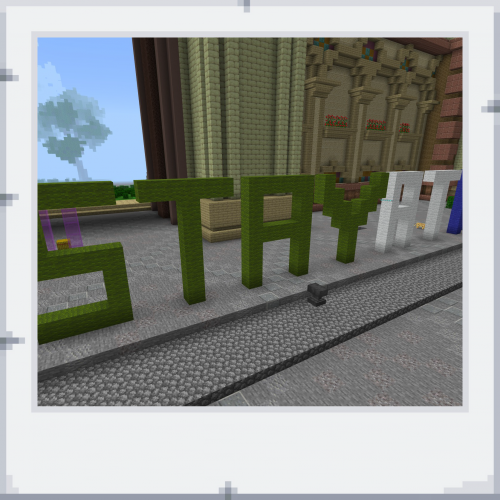 As you can see by this picture, the joint-world build challenges were also a way for children to express their feelings and come to terms with issues happening in their physical world.
As you can see by this picture, the joint-world build challenges were also a way for children to express their feelings and come to terms with issues happening in their physical world.
Digital citizenship as a lived curriculum
Darren Giuliano and Tim Murtagh from Newbury Primary School took the whole year 4 class into a multiplayer world and set projects to see who could build their best house. Very quickly, they had a village, and everyone had lots of fun checking in each day to see what was new. It was an excellent opportunity to manage, demonstrate and support expectations, and realize digital citizenship as a lived curriculum. When introducing Minecraft: Education Edition, Danielle Canavan and Chloe Bourke of South Syndal Primary School took the opportunity to develop and establish Minecraft class protocols in conversation with their students.
Sociability comes in many forms
Ivanhoe Primary School’s Lenny Boyd discovered this through his literacy skills lessons with character role-playing in the Storytime Settings lesson. Year 2 Students gathered online as Lenny screen-shared a playthrough of three well-known fairy tales. The students took on the roles of various characters by reading their text bubbles with expression and drama! While students could have played through these stories independently, the live sessions demonstrated that it’s not just in multiplayer worlds where you create connections and relationships for your students.
Ardan Johnston at Aspendale Primary School created connections with his year 4 students through his pop-culture-style videos showcasing student solutions to weekly Minecraft challenges. He shares back pictures or videos of individual student work in a fun and quirky acknowledgement of their efforts. Ardan now reports that some of the most active students in these challenges have been the most disengaged in the past. Having created the model, he is about to pass the baton for hosting the program on to the students.
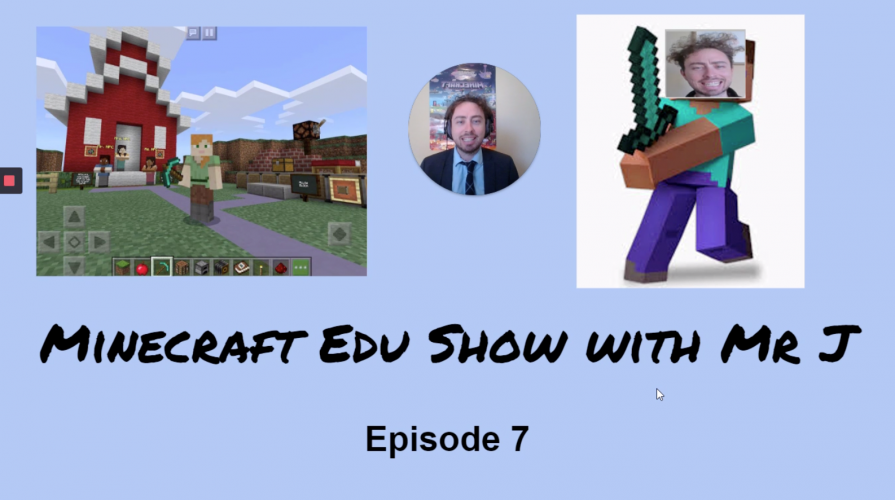 Watch an example of Arden’s fun video creations
Watch an example of Arden’s fun video creations
Pedagogical practices
Project-based and challenge-based learning activities came to the fore with Minecraft in remote and hybrid learning. Teachers began to incorporate the game as a choice for projects and creative designs and solutions. Minecraft was included in live class sessions in various ways, from a teacher screen-share for whole-class play in a Minecraft world to a student sharing a walkthrough of their design solution. Some teachers were confident enough to take a deep dive into full curriculum integration, and others needed to ease into Minecraft implementation. These teacher stories demonstrate that Minecraft is an environment that fosters both student and teacher creativity.
Group work and differentiation
Kirsty Bridge from Wallan Primary School has supported year 6 students in the Hour of Code world for Minecraft: Education Edition in preparation for a major coding focus in term 4. She has been working in real-time with differentiated groups to step through the challenges, advancing individual basic coding skills and discussing the logic of coding. Students are working to hone their skills while in remote learning in readiness for a large joint project when back in face-to-face classrooms.
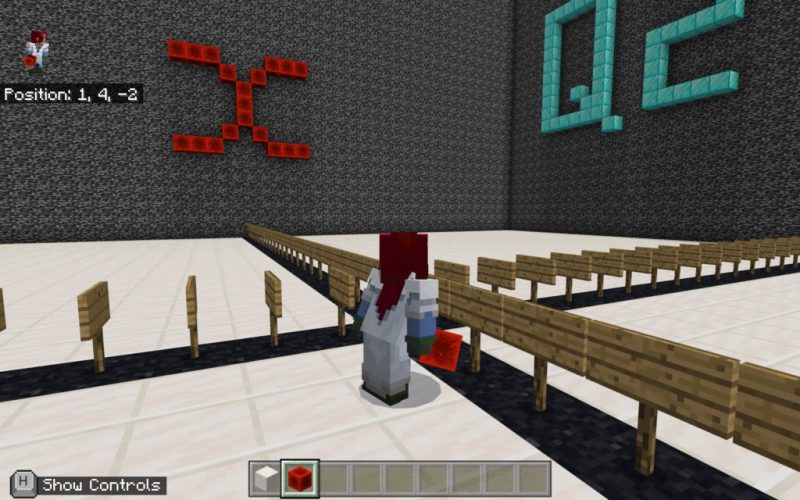 A world for students to use as a template for exploring cartesian planes.
A world for students to use as a template for exploring cartesian planes.
Bring contexts to life
Anastasia Moukas and Joel Parsons at Ashburton Primary School hosted Minecraft Mondays for their year 4 students. After some preliminary build activities, they introduced the topic of Australian history, allowing students time and choice to utilize Minecraft as a form of creative response. Students were asked to read about the lives of different people in one of the World Wars and develop responses about the challenges that faced them. One student, who built a scale version of the cliffs above the beach at Gallipoli in World War 1, commented that she now understood the enormity of the task ahead of the soldiers when her avatar stood below those cliffs.
Nathan Gourzelas and David Tyndal of Eltham East Primary School studied urban redevelopment using the realistically scaled version of the Melbourne Central Business District in Mini Melbourne. Lockdown did not prevent these students in year 5 from touring their capital city. Indeed, Minecraft gave them an advantage as they used their tour on the ground and from the air to find areas they felt needed improvement. As part of their curriculum work, students submitted proposals justifying demolishing and redevelopment on their chosen sites. Student creations included creating a zoo in the Botanic Gardens with a railway tour and entertainment platforms floating in the Yarra River.
Transformation of perennial topics
Adrian Quirk and Marlee Hillier from Morwell Park Primary School were looking to transform the curriculum unit on bridge-building they teach year 5. Adrian created a Minecraft world featuring instructions and challenges. Students were set contexts and scenarios requiring the construction of bridges with increasing complexity. This activity coincided with science and physics sessions on bridge design and purpose, as well as the study of some famous bridge designs around the globe. This was truly a showcase of teacher and student creativity!
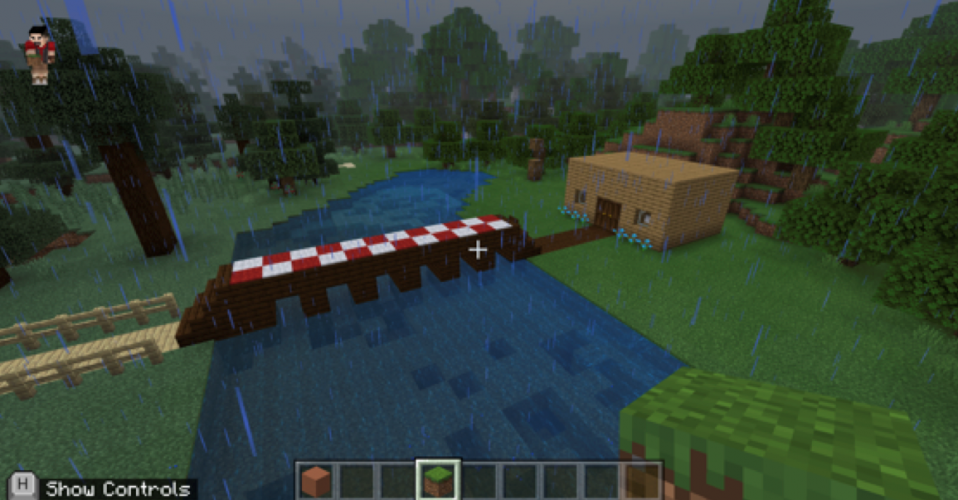 Challenge completed: Build a bridge to your friend’s house
Challenge completed: Build a bridge to your friend’s house
Aspendale Primary School’s Matthew Bird had been working with his year 3 students on a literacy unit based around myths and legends, in particular, Theseus and the Minotaur. Students wrote procedural texts about escaping the mythical labyrinth and used mathematical skills to design mazes. Minecraft was offered as a creative option to build a maze, along with Lego, cardboard, or other construction tools. As a culmination, Matthew was motivated to build his own maze, a shared world where he programmed non-player characters (NPCs) to help students to conquer the labyrinth, just as they did in the myth.
Blue sky thinking
Julie Snowdon at Lyndale Secondary College was keen to use Minecraft to light a spark for disengaged students. While onsite, she has started year 7 and 8 Minecraft clubs, and the girls’ club started working on some build challenges together, including Build a Better Bedroom, Build a Campsite, and Build Rollercoasters. The girls have now taken a giant step, partnering with students from Newland’s Intermediate School in Wellington, New Zealand, to design an international Minecraft esports league specifically designed by girls, for girls. They are using Flipgrid to communicate and share ideas between schools. They have worked in Minecraft to design league trophies and brainstorm league frameworks and challenge ideas. It is early days, but they hope to hold their first competitions by the end of 2020.
Next steps
Despite some initial remote learning challenges, teachers in the Minecraft Innovation Clusters have excelled in using the game remotely with their students. They are leading the way for the broader community by demonstrating best practices to teachers across the state. The community hosted a webinar at the close of term 3 in September 2020, where three community members shared their individual journeys with Minecraft: Education Edition in their various learning contexts. Tayla Mason from Whittlesea Primary School, Shaun McEachern at Lyndhurst Primary School, and Sandringham Primary School’s David Jones are three stellar educators who have embraced Minecraft with both heart and intelligence. Feedback on the session praised these teachers for making innovation seem within the grasp of all educators. You can hear about their journeys in this webinar recording.
This success has encouraged us to expand the community, inviting new schools to express their interest in joining and offering our more experienced teachers leadership roles. While the numbers inside the group may appear small, the impact their work is having on the broader education community is immense. We are certain that the lessons learned in this remote and hybrid learning period will serve to strengthen the quality of offerings for Victorian students in all contexts, making 2021 look very rosy for all concerned!
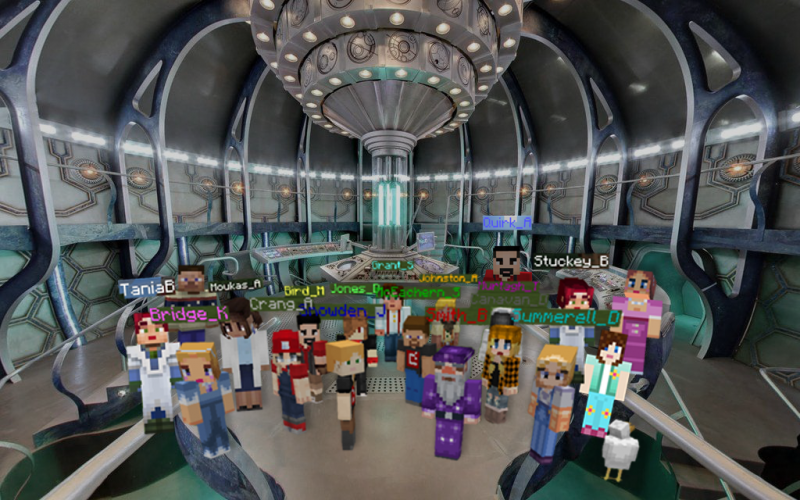 Our teacher community: Bigger in the inside
Our teacher community: Bigger in the inside
Curious to hear more of this story? Get the full picture in the Department of Education Sway about the project. Find more stories about the power of Minecraft: Education Edition for teaching at education.minecraft.net/impact.
The post Victoria Celebrates Remote Learning appeared first on Minecraft: Education Edition.
This post was originally published on this site.


